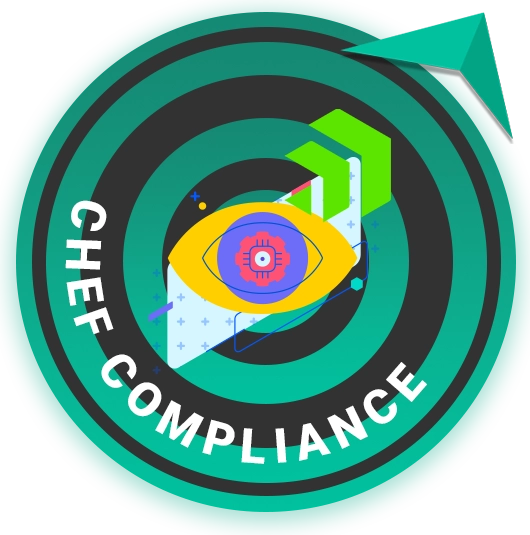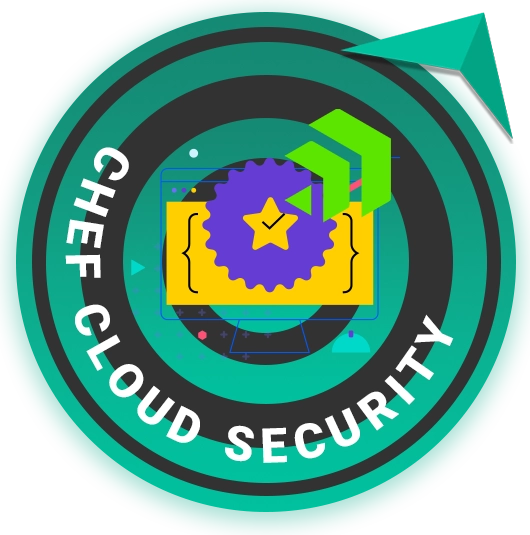CHEF INFRA MANAGEMENT ULTIMATE GUIDE
Tool Review & Analysis
Cleared Workforce is a specialty search firm focused on security-cleared Talent Recruitment for Government Contractors.
100+
product reviews of trending tech
100+
tech written guides for users
100+
tech tools in our tool database

CHEF INFRA MANAGEMENT
Chef Infra is a powerful automation platform that transforms infrastructure into code, enabling users to automate how they build, deploy, and manage their server infrastructure. Through its idempotent resource model and use of cookbooks and recipes, Chef Infra ensures that server configurations are applied consistently and safely across development, staging, and production environments.
Section 1
Installation & Setup
The installation and setup of Chef Infrastructure Management is a straightforward process that requires adherence to a series of steps to ensure a smooth and successful deployment. It’s vital to follow these guidelines carefully to set up your environment effectively for configuration management and automation.
Begin with downloading the Chef Infrastructure Management package from the official Chef website. The choice of package depends on your server’s operating system. For Linux users, the package typically comes in a .deb or .rpm format, suitable for Debian-based or RedHat-based systems, respectively.
Install the package using the package manager appropriate for your system. For instance, on Debian-based systems, use sudo dpkg -i chef-server-package.deb, and for RedHat-based systems, use sudo rpm -Uvh chef-server-package.rpm.
sudo dpkg -i chef-server-package.debAfter installation, you need to configure the Chef server. This is done by running sudo chef-server-ctl reconfigure, which sets up the necessary components and services for the Chef server to function properly.
sudo chef-server-ctl reconfigureConfiguration involves setting up your workstation and node. On the workstation, install Chef Workstation, which includes tools like Chef Infra Client, Chef InSpec, and Test Kitchen. Installation is platform-specific, but generally, you download the package and install it similarly to the Chef server.
Set up your workstation by creating a .chef directory and configuring your knife utility. Knife is a command-line tool that provides an interface between your workstation and the Chef server. This involves creating a knife.rb file, which includes details such as your Chef server’s URL and the location of your validation keys.
vim knife.rbRegister a node with the Chef server, which involves bootstrapping the node using Knife. This action will install the Chef Infra Client on the node and register it to the Chef server, ready for configuration management.
If you encounter permission issues, make sure your user has the correct permissions set within the chef-repository and that all necessary keys (client and validator) are correctly placed and have appropriate permissions. Utilize Chef’s built-in logging by setting the log_level in knife.rb to :debug for more detailed error messages during troubleshooting.
Another typical problem is errors during cookbook upload due to syntax or dependency issues. Use the knife cookbook upload command cautiously and pay attention to error messages. Running chef exec rubocop can help identify and fix syntax errors in recipes. Additionally, ensure all dependencies are correctly specified in your cookbooks’ metadata.
Section 2
Features and Capabilities
Chef Infrastructure Management offers a broad range of features designed for efficient configuration management and automation across different environments, enabling users to maintain consistency, manage scale, and ensure compliance.
Automated configuration management: Allows users to define infrastructure as code, making it possible to manage and configure servers, databases, and other critical infrastructure automatically and consistently.
Integration with cloud services: Chef supports integration with major cloud providers, enabling users to automate not only on-premise but also cloud environments seamlessly.
Compliance and security management: Chef includes features for enforcing compliance and security policies across your infrastructure, ensuring that all systems adhere to company and regulatory standards.
Continuous deployment: Chef can automate the deployment process, ensuring that applications are automatically deployed and updated across all environments consistently.
Disaster recovery: With Chef’s automation, you can quickly redeploy your infrastructure configuration to new environments, reducing downtime during disaster recovery scenarios.
System hardening and compliance: Chef can apply predefined compliance profiles to ensure that systems are configured securely and in compliance with industry standards.
Learning curve: The complexity of Chef’s powerful DSL (domain-specific language) can be a barrier for new users.
Infrastructure specificity: Some features and configurations may be specific to certain types of infrastructure, which can limit flexibility for environments with diverse systems.
Integration challenges: While Chef offers extensive integration capabilities, integrating with legacy systems or proprietary technologies may require additional effort and customization.
Section 3
Advanced Usage and Techniques
For those looking to leverage Chef Infrastructure Management to its full potential, exploring advanced features, best practices, and integration techniques can significantly enhance the automation, efficiency, and scalability of your infrastructure.
Custom resources: Advanced users can define custom resources, extending Chef’s functionality to meet specific needs and streamline repetitive tasks.
Data bags: Use data bags for managing environment-specific configurations and secrets, allowing for more dynamic and flexible infrastructure management.
Chef Analytics: Leverage Chef Analytics to gain insights into your infrastructure’s state, track changes, and monitor compliance across your systems.
Code organization: Organize your cookbooks,roles, and environments in a clear hierarchy to facilitate maintenance and scalability. Utilize version control systems, like Git, to track and manage changes to your infrastructure code, ensuring that changes can be reviewed and rolled back if necessary.
Testing and validation: Implement a testing pipeline using Test Kitchen, ChefSpec, and InSpec. Regularly test your infrastructure code across different environments to catch issues early and ensure that deployments meet your standards.
Continuous Integration/Continuous Deployment (CI/CD): Integrate Chef with CI/CD pipelines using tools like Jenkins, GitLab CI, or GitHub Actions. This allows automated testing and deployment of infrastructure changes, facilitating a DevOps workflow.
Monitoring and logging: Integrate Chef with monitoring tools like Splunk, ELK Stack, or Datadog. This provides visibility into your infrastructure’s performance and the effects of configuration changes.
Cloud services: Utilize Chef’s integrations with cloud platforms like AWS, Azure, or Google Cloud to automate not just within your local infrastructure but also across your cloud environments, enabling a unified approach to infrastructure management across your entire landscape.
Section 4
FAQs
Addressing frequently asked questions about Chef Infrastructure Management can clarify common uncertainties and provide users with a solid understanding of how to best utilize the tool within their environments.
- How does Chef differ from other configuration management tools?: Chef uses a declarative approach and is built around the concept of ‘infrastructure as code’. Unlike imperative tools, Chef defines the desired state of the system and automatically applies changes to reach that state.
- Can Chef manage Windows environments as well as Linux?: Yes, Chef can manage both Windows and Linux environments, offering a versatile solution for diverse infrastructures.
- What is a cookbook in Chef?: Cookbooks are the primary unit of configuration and policy distribution in Chef. They contain all the definitions, files, templates, and other components needed to configure a system.
- How secure is Chef?: Chef includes several features to enhance security, including encrypted data bags for sensitive information and compliance audits to ensure systems meet security standards.
- Can Chef be used in cloud environments?: Yes, Chef can be used to automate cloud environments alongside traditional on-premises environments, providing flexibility and control across all types of infrastructure.
- Chef is only for large enterprises: While Chef offers powerful capabilities well-suited to large enterprises, it is also applicable and beneficial for small and medium-sized businesses.
- Chef is too complex for simple automation tasks: Although Chef is powerful, it can also be used for straightforward automation tasks; the complexity depends on the use case.
- Chef requires Ruby knowledge for basic operations: Basic usage of Chef does not require in-depth Ruby knowledge. Familiarity with Ruby is beneficial for advanced features and custom resource development.
- Chef cannot manage network devices: Chef has expanded beyond servers and can manage network devices and applications, providing a more comprehensive infrastructure automation approach.
- Using Chef locks you into a specific cloud provider: Chef supports multiple cloud providers and offers the flexibility to manage environments across different clouds and on-premises.
Section 5
HELPFUL CHEF COMMANDS
Understanding and utilizing Chef’s command-line tools is essential for effective infrastructure management. This section provides a concise guide to key commands that facilitate various Chef operations.
Initializes a new node to be managed by Chef Infra Server, installing the Chef Infra Client and registering the node.
knife bootstrap.
.
.
Executes the Chef Infra Client on a node, applying the latest updates and configurations defined in your cookbooks.
chef-client.
.
.
Displays a list of all nodes that are registered with the Chef Infra Server.
knife node list.
.
.
.
Uploads cookbooks from your local workstation to the Chef Infra Server, making them available for nodes.
knife cookbook upload.
.
.
.
Creates a new role on the Chef Infra Server, allowing you to group environment-specific settings and cookbooks.
knife role create.
.
.
.
Shows all the environments that have been defined in the Chef Infra Server.
knife environment list.
.
.
.
Allows you to search for nodes on your Chef Infra Server using various criteria, such as roles or attributes.
knife search node.
.
.
.
Creates a new data bag on the Chef Infra Server, which can be used to store shared data between nodes.
knife data bag create [BAG_NAME].
.
.
.
Generates a new cookbook structure on your workstation, providing a starting template for developing your configurations.
chef generate cookbook.
.
.
.
Checks the validity of the SSL certificate being used between your workstation and the Chef Infra Server.
knife ssl check.
.
.
.
Section 6
CHEF PRODUCT SUITE
The Chef product suite includes the following tools:
Helps ensure configurations are applied consistently across environments through automation.

CHEF INFRA MANAGEMENT
Automates application delivery to enable consistent and successful application outcomes at scale.

CHEF APP DELIVERY
Maintains compliance and prevents security incidents across different environments while improving efficiency.

CHEF COMPLIANCE
Automates IT resource management to enhance efficiency and reduce risks.

CHEF DESKTOP
Provides access to ready-to-go compliance scanning and remediation content.

CHEF PREMIUM CONTENT
Offers end-to-end cloud security management to maintain compliance and prevent security incidents.

CHEF CLOUD SECURITY
The cybersecurity information provided on this site is strictly for educational use. We hold no responsibility for misuse and urge users to apply these skills ethically, on networks or systems where they have explicit authorization – such as a private home lab.
